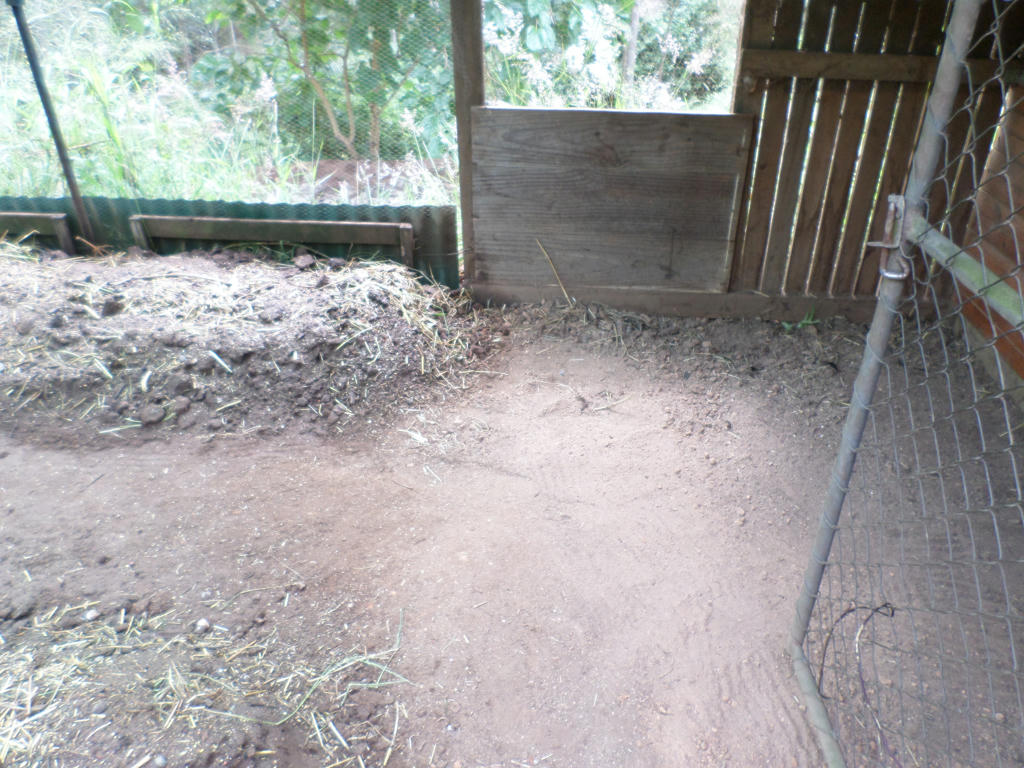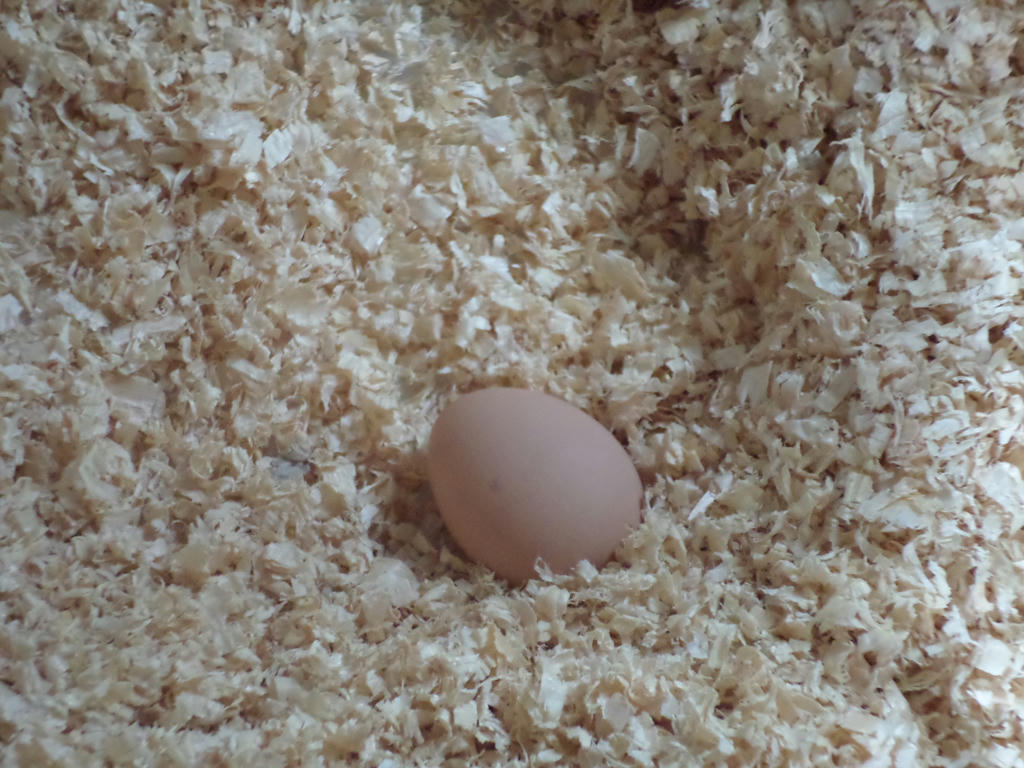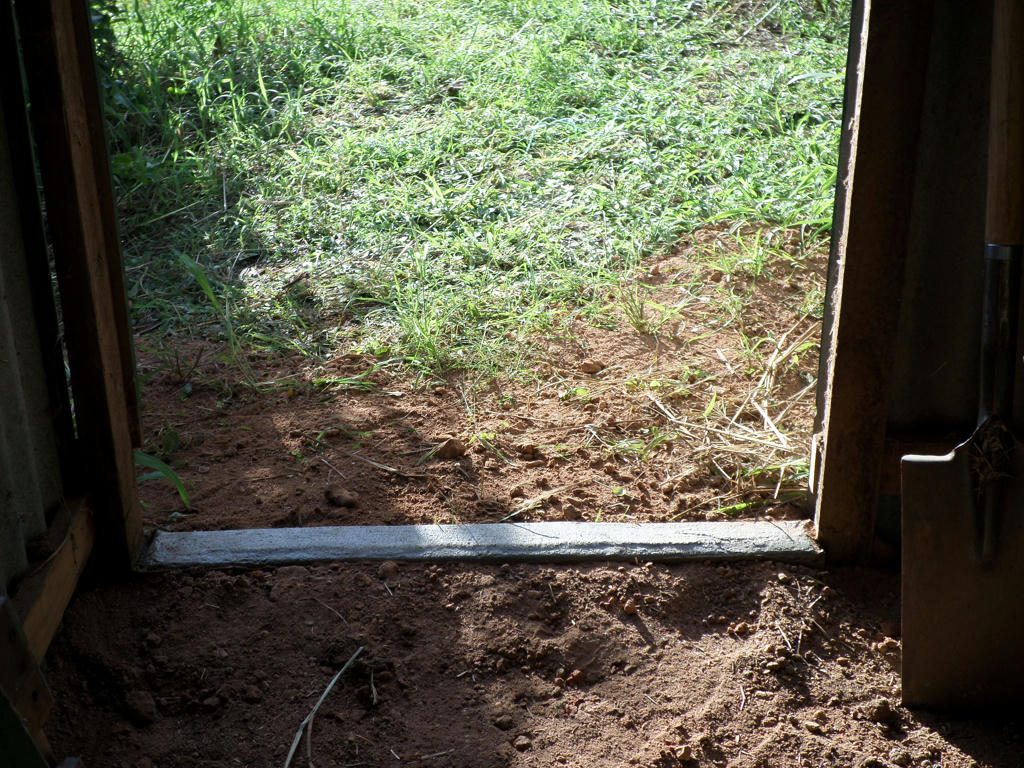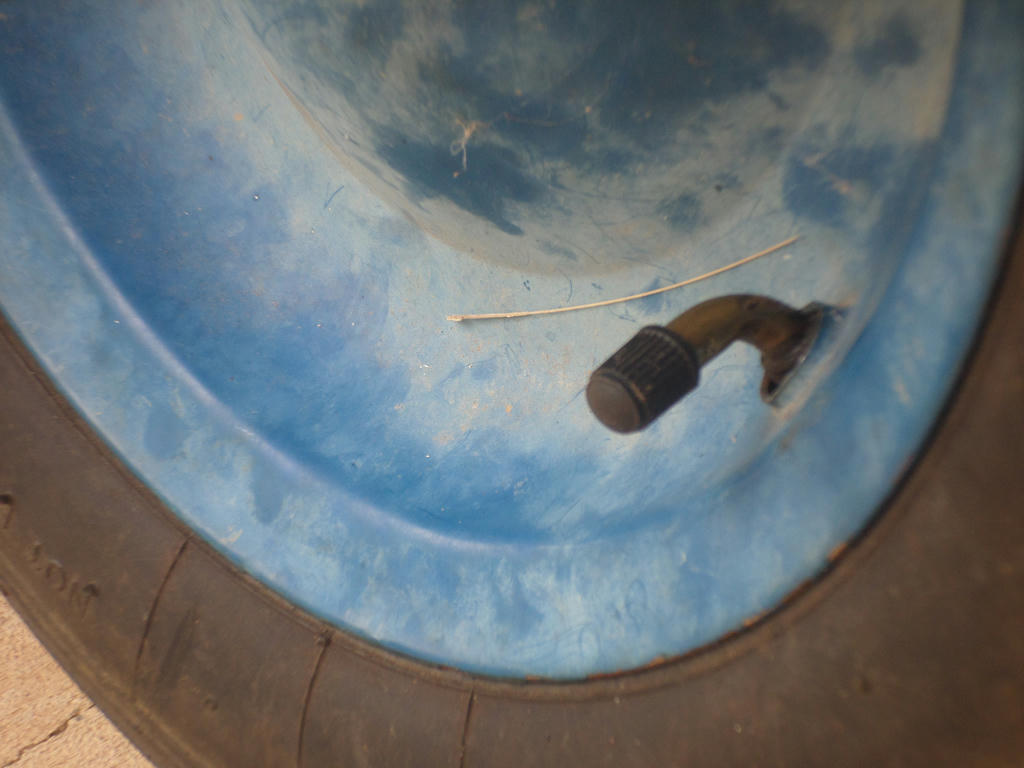Pack your bags ladies, because today you're moving house! Hilltop is officially open for new residents. I would have been finished several days sooner, only I had a technical hitch. Literally...a hitch!
Welcome
The renovated front door, had a ventilation window put in, to help with cross breezes in summer. Only, cutting that bit of transparent perspex off the bottom of the door made it kind of flimsy. The original bolt which kept the door closed wasn't doing anything for the bottom any more. A determined animal would be able to squeeze through, possibly even breaking the door. So I came up with a little invention, for a little more security.
Hitch
I was given some metal latches many years ago for this very purpose, but never saw myself needing them. Not until my newly renovated, flimsy door came into being. To make it work however, I needed a long bolt to go through the post. I hunted around several hardware stores, only to realise 100mm was the longest bolt they came in, with continuous thread. The shop assistant suggested a long rod I could cut to length instead.
Front and back
It worked a treat! I was able to nip off the size required with my angle grinder, and now, with a simple twist, I can secure the lower section of the door. I could have gone to the trouble of making a whole new door, but the old one was still in good shape and I like recycling.
Speaking about recycling though, I had a problem with the original doors being too short, since I got rid of the step underneath. So I used the transparent perspex I cut off the bottom of the front door for the ventilation window - cut it in half again, then screwed them to the top of both doors (above picture and below).
Run door
This lovely door was originally the internal one, which blocked off the coop from the run. So Hilltop had 3 doors originally. Since ditching the internal wall though, it wasn't necessary for 3 doors any more - it was in superior condition to the older door it replaced though.
The old interior wall, where the nest was once attached, became a roost instead!
Roost (foreground) and nest (background)
Then the nest got moved to the opposite wall. I was going to make an external nest we could check from the outside, but again, why build a new nest with new materials, when I had an existing one? It's right near the front door now, so is more convenient anyway.
All for an egg!
I got two eggs in the new nest today (both were Christened) and this was the first one. I got an egg from their old coop, before I moved them this morning too. But no more dirty eggs, as the rain would soak their former run area and they'd walk into the nest with muddy feet. With a fully enclosed roof area, I will have less of a problem with mud.
Internal plan
The new area is spacious, with enough room for their necessities. All within the dimensions for Council too. I didn't get to hang the feeder and water container before taking this photo, but you should see their designated chains, hanging from the rafter.
We covered the ground with slashed grass and will continue to top it up with weeds and the like, as they become available. Chickens make some really great soil if you give them the ingredients.
Chicken business
The ladies weren't too keen on being relocated, but loved the new digs when they arrived - heading straight for the greenery which grew inside the coop, during the renovation. I didn't pull them out, as I thought the chickens would have more fun doing it themselves!
That lone ginger chicken was adopted from the neighbours. It escaped along with its two other friends. We saw them several times in our backyard, but then three, went down to two, until eventually, we saw only ginger. She hung around our coop a lot and I wondered where her friends got to. When she started digging up our plants, I let her into the coop with the others. She seemed happy to join them.
About a week later, my husband ran into the neighbour who worked at the local pharmacy. He told them about this rogue chicken we adopted. Apparently it was theirs. They noticed the chickens were escaping their coop, and like us, noticed the numbers returning every night was less and less. They thought ginger had met the same fate as her friends. They said we were welcome to keep her, as she was probably safer in our coop until they got theirs repaired.
Finished
So vagabond Ginger, has seen inside two of our coops now. All the work inside Hilltop has been completed for the most part, but I still have the guttering and rainwater tank to fit outside. I'll do that a little later, as I have some renovating to do to Middle Ridge coop now, which just became vacant.
Valuable real estate there, which I will report on what I'm doing with, very soon!
On the budget side of Hilltop renovation though, it all came under $100. I reused most of the old materials (screws, hinges and even the iron which was formerly the internal wall, was allocated to the extra roofing needed) which brought down the overall cost.
As I was moving the tools and supplies out of the coop yesterday, I felt such a sense of relief. This day, which had been planned for, nearly
seven months ago, had finally arrived. I'm glad I did it - it was worth all the effort. Especially being able to wheel that barrow, straight into the coop to clean it!








































